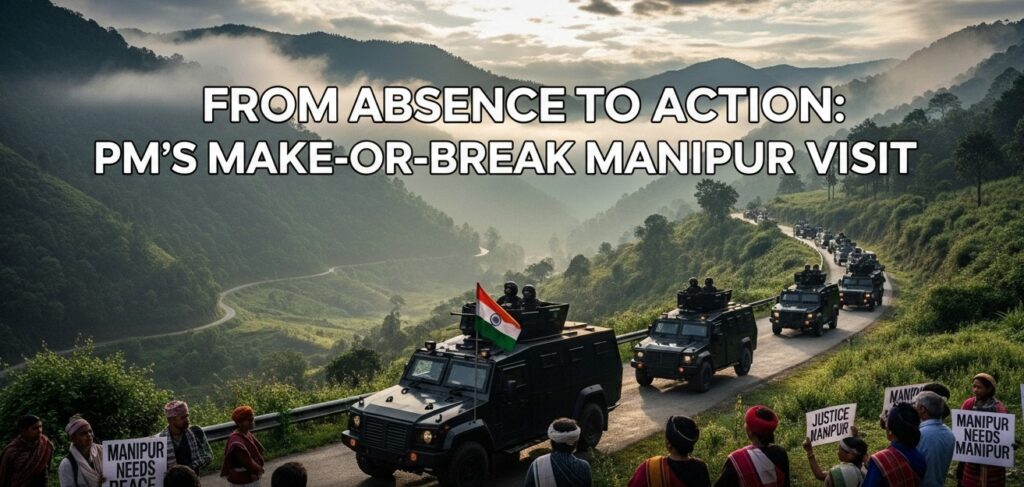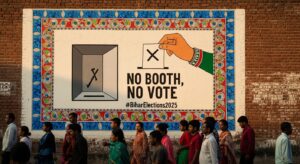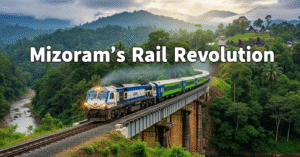
Thirty-five thousand displaced souls wait in relief camps as Prime Minister Modi finally breaks his 28-month silence on Manipur’s ethnic carnage. Armed with ₹8,500 crore and mounting criticism, he faces democracy’s harshest test: proving that political will can triumph over communal hatred when it matters most.
Twenty-eight months of strategic silence ends as Prime Minister Narendra Modi steps into Manipur’s wounded landscape on September 13, 2025. This calculated absence, criticized by many, defended by few, now transforms into action that could either restore faith in federal leadership or cement perceptions of governmental indifference toward ethnic carnage. With 221 lives lost, 35,000 people displaced across 315 relief camps, and a state fractured along ethnic lines, Modi’s intervention arrives at democracy’s most testing moment. The ₹8,500 crore development package he carries isn’t just financial commitment; its political capital wagered on whether economic healing can bridge ethnic divides. This visit will either mark the beginning of Manipur’s resurrection or confirm that some conflicts run too deep for even the highest office to heal.
Why the 28-Month Wait Made Strategic Sense
The Prime Minister’s calculated absence during Manipur’s darkest period wasn’t political neglect, it was crisis management pragmatism. Since ethnic violence erupted in May 2023 between Meitei and Kuki communities, claiming over 221 lives and displacing 35,000 people across 315 relief camps, any premature high-profile intervention risked inflaming tensions rather than healing them.
The delay reflected three strategic considerations: volatile security conditions that made visits logistically dangerous, the risk of perceived bias toward either community, and the need for sustained administrative groundwork before symbolic engagement. This approach prioritized substance over spectacle, allowing behind-the-scenes reconciliation efforts to mature before public diplomacy.
The ₹8,500 Crore Peace Dividend
Modi’s Manipur package isn’t just development spending, its economic diplomacy designed to rebuild trust through tangible benefits. The substantial financial commitment addresses developmental grievances while demonstrating Centre’s unwavering commitment to the region’s future.
This economic intervention serves multiple purposes: providing immediate relief to conflict-affected areas, creating employment opportunities that could reduce youth participation in violence, and signalling long-term federal commitment beyond crisis management. The carefully planned visits to both Churachandpur (Kuki-majority) and Imphal (Meitei heartland) reflect meticulous political balancing aimed at avoiding perceptions of favouritism.
What Success Looks Like
The visit’s true measure won’t be immediate peace dividends but its catalytic effect on sustainable dialogue mechanisms. Beyond humanitarian outreach to displaced communities, the engagement must address fundamental issues: competing Scheduled Tribe status claims, land rights disputes, and resource allocation conflicts that fuel ethnic competition.
Success requires three outcomes: restarting meaningful inter-community dialogue, transparent implementation of development projects to prevent resource-based conflicts, and establishing permanent federal mechanisms for early conflict intervention. The visit signals recognition that peripheral conflicts can destabilize national security and social cohesion,a lesson learned at considerable cost.
The Broader Stakes
The ultimate test of Modi’s Manipur gamble lies not in September’s symbolic gestures but in the months of grinding implementation that follow. For 35,000 displaced citizens watching from relief camps, this visit represents their last hope for federal intervention that transcends political calculations. The Prime Minister’s carefully orchestrated engagement with both Meitei and Kuki communities’ signals recognition that India’s unity depends on healing its deepest wounds, not merely managing them.
History will judge this intervention harshly if it becomes another cycle of promises without delivery, meetings without meaningful dialogue, and development packages that enrich contractors while communities remain divided. But if Modi’s action matches his rhetoric, September 13, 2025 could mark the moment when India’s democracy proved it possesses the moral courage to confront ethnic hatred with sustained commitment to justice and reconciliation.
The stakes transcend one troubled state; they encompass the very idea of India as a nation where diversity strengthens rather than destroys. In Manipur’s scarred landscape, Modi faces his defining test: whether political leadership can triumph over ethnic division, or whether some conflicts lie beyond even the highest office’s capacity to heal. The answer will echo far beyond the hills of this northeastern frontier.


